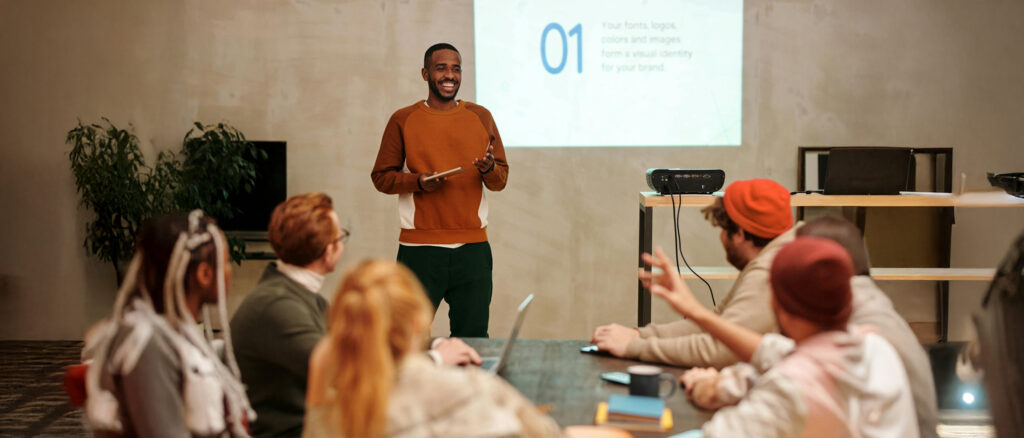Marketers! You’re dumber than you think you are
Emily Shelley’s cut-down version of her popular talk on cognitive bias at Marketing Week Live. You may think you’re led by the data when you make marketing decisions, but you’re far more biased than you realise.
You sit at the board and suddenly your heart leaps. Your hand trembles to pick up the piece… But what chess teaches you is that you must sit there and think about whether it’s really a good idea and whether there are other, better ideas – Stanley Kubrick
I’ve been a bit challenging with the title of this, obviously. What I mean is that marketers are human and, therefore, flawed.
Our brains are wired for survival in the wild (not for blog writing), so even when we think we’re being clever, strategic and led by the data, we’re subject to a whole series of biases that affect our decisions.
Confirmation bias

“What the human being is best at doing is interpreting all new information so that their prior conclusions remain intact,” said Warren Buffett, a man who knows a thing or two about decision-making.
This is known as confirmation bias. Have you ever tried to tell a friend that you’ve seen their partner with someone else? I have, and suffice it to say, it didn’t go down well. They did listen to me, but rejected what I had to say, because it contradicted what they believed about their partner.
Here’s an example that relates more to content: is there something or someone that everyone has very strong feelings and beliefs about? Of course there is…

This is Peter Griffin as Donald Trump – just a tiny bit dumb? But then I’m biased, and so are you. How many of us look for comments from Trump to reinforce our own opinions? Would we be open to new information that contradicted our confirmed view of him? Not likely.
This doesn’t mean we’re incapable of changing our minds or embracing new evidence. In fact, as you’ll know, new data can be the springboard for many successful marketing campaigns and strategies.
Anchor bias
Here’s an example of a new piece of data that became the trigger for a whole new product line.
Pepsi, back in the day, found themselves wowed by a piece of revelatory insight – that lots of people were drinking Pepsi in the morning.This revelation became anchored in their minds to such an extent, they ignored several warning signs and persevered with plans to launch this:

Because who doesn’t want a special kind of Pepsi just for mornings? It turns out everyone doesn’t want a special kind of Pepsi just for mornings. It sank with little trace.
Anchoring is when you see every bit of other data in relation to the original anchor, and it weighs you down. You’ll see it in action most often on price discounts – we see the new price in relation to what it used to be (the anchor) and believe we’ve got ourselves a massive deal.
Wishful thinking

Most people cannot help but look on the bright side. Studies have consistently shown that holding all else equal, subjects will predict positive outcomes to be more likely than negative outcomes. It’s how we keep going day after day.
Wishful thinking, as a cognitive bias, is seeing something as either true or false because we wish it to be true or false – so it effects grumpy people too.
Snapchat is crap. (I wish that to be true because I don’t understand it.)
The trouble with wishful thinking is that it’s catching. Before long, you have the ‘bandwagon effect’ or ‘group think’ – when everyone in your team jumps on board with the same wish.
Illusory correlations
Are you clever enough to see the shark in the next picture?

If you were around in the 90s you’ll remember that you’re supposed to let your eyes go all blurry and look through the picture, not at the picture… And then pretend to see a shark.
I’ve shown you this to talk about seeing patterns that aren’t there – known as illusory correlations. Are you one of those people who spends a day out in London and can’t help but think, ‘God, Londoners are rude’, when no one speaks to you on the bus? If so, you’re seeing a link that isn’t there. The people you met may be rude, but is that just because they’re from London? You don’t know why.

This is EZ Squirt. Launched by Heinz on the back of the insight that kids love squirting ketchup because it’s fun and they can make patterns – like with paint. What if we could get them to squirt more? Then they’ll consume more and their parents will have to buy more. So, let’s make it more fun to squirt, let’s make it even more like paint! Because doesn’t this look yummy kids?
And if you think you could have spotted that was doomed to failure (who wants to eat purple food?), I’d say you’re suffering from the hindsight bias.
Uncertainty bias

Another common bias is to underestimate rare events and fail to comprehend all the uncertainties that are out there.
Just like the people behind the diet candy brand Ayds, riding high in the late 70s and worried about the threat of imports from Asia – not the arrival of a killer disease with the same name.
Uncertainty scares us, so we don’t like to make strategies. We bunker down and stick to what we know. Or rather, what we think we know.
Conservativism bias

“We didn’t do anything wrong, but somehow, we lost,” said Stephen Elop, CEO of Nokia in 2013, at the press conference to announce that they’d finally called time on their phone business and sold out to Microsoft.
What they did wrong (among other things) was to stick to what they knew best and avoid the risky new. This is known as the conservatism bias – the rejection of new information in favour of prior evidence.
Availability bias

If I asked you whether you would swim with killer sharks what would you say? Most probably, ‘no thanks’. But that’s only because you’re dumb. You’re susceptible to the availability bias. Most people would not swim with sharks because they believe it’s too risky. Based on the data, it’s not that risky at all.
We judge whether something is the right thing to do based on how easily examples and experiences of it being successful come to mind (are available). Examples of people getting killed by sharks are available to most of us, so we assume it happens more often than not. But our brain doesn’t surface information in the order of its ‘rightness’ – just how available it is. Including how recent it is too…
Recency bias

I like to think of recency as the ‘teenage bias’. I have a daughter on the cusp of being a teenager who already likes to say things to me like, ‘You NEVER let me do ANYTHING I want to do, you are RUINING MY LIFE after one slightly disappointing trip to the cinema. Or my favourite; ‘I NEVER have ANYTHING to EAT ever – you NEVER feed me,’ after I produced one meal later than normal. She takes a recent event and blows it up into something that always happens.
In the early 90s Kellogg’s already had huge international success – it had manufacturing facilities in 19 countries and marketed its products in more than 160 countries. It took all of that experience and invested heavily in India with a strategy to gain 2% of the market. It was a well-documented failure for lots of reasons, but one of those was a failure to comprehend all of the risks involved. They had to cast their minds further back into the past to remember failures, and so failure had begun to feel like something that was now no longer likely to happen. Except it was, and it did.
Inconsistency bias

One of the ways you’re exceptionally dumb is in thinking about your future selves. You’re only really motivated by what’s best for the present and the near future version of yourself. Your tiny brain doesn’t allow you to make decisions that are consistent for your whole life. Like most people I do care about saving for the future and being health conscious, but I value things that are happening now more highly. It’s called the inconsistency bias.
It’s one of the reasons behind the most famous case of strategic failure in recent times – Kodak’s decision not to cannibalise their existing film business by investing in the digital camera technology they invented.
Blind-spot bias
All human beings are susceptible to these biases. And yet, if you reflected on your own behaviour and your own decisions, you’ll likely decide that, actually, you acted quite rationally.
You’d be deluded. You’re prone to notice bias in others much more than you notice it in yourself. It’s known as the blind spot. You believe you’re aware of ‘how’ and ‘why’ you made decisions, and you therefore conclude that bias did not play a role. You’re obviously not aware of the thoughts that led others to make their decisions and so conclude they were more likely to be irrational. But cognitive shortcuts are unconscious – so how would you know?
How to beat bias
I think it’s near impossible to beat your innate cognitive biases. But, taking time to review decisions and explore alternatives certainly helps.
Conflict between people and between departments is another positive way to tackle biased decision making – if it’s out in the open. A study in the Journal of the Academy of Marketing Science found that open communication and ‘functional conflict’ improved performance. Centralisation, and high communication barriers, lowered performance by increasing ‘dysfunctional conflict’.
So, make sure your teams are as diverse as possible in their experiences, engage in some functional conflict, review your decisions and look for possible biases before they lead you into marketing failure.

Sticky



